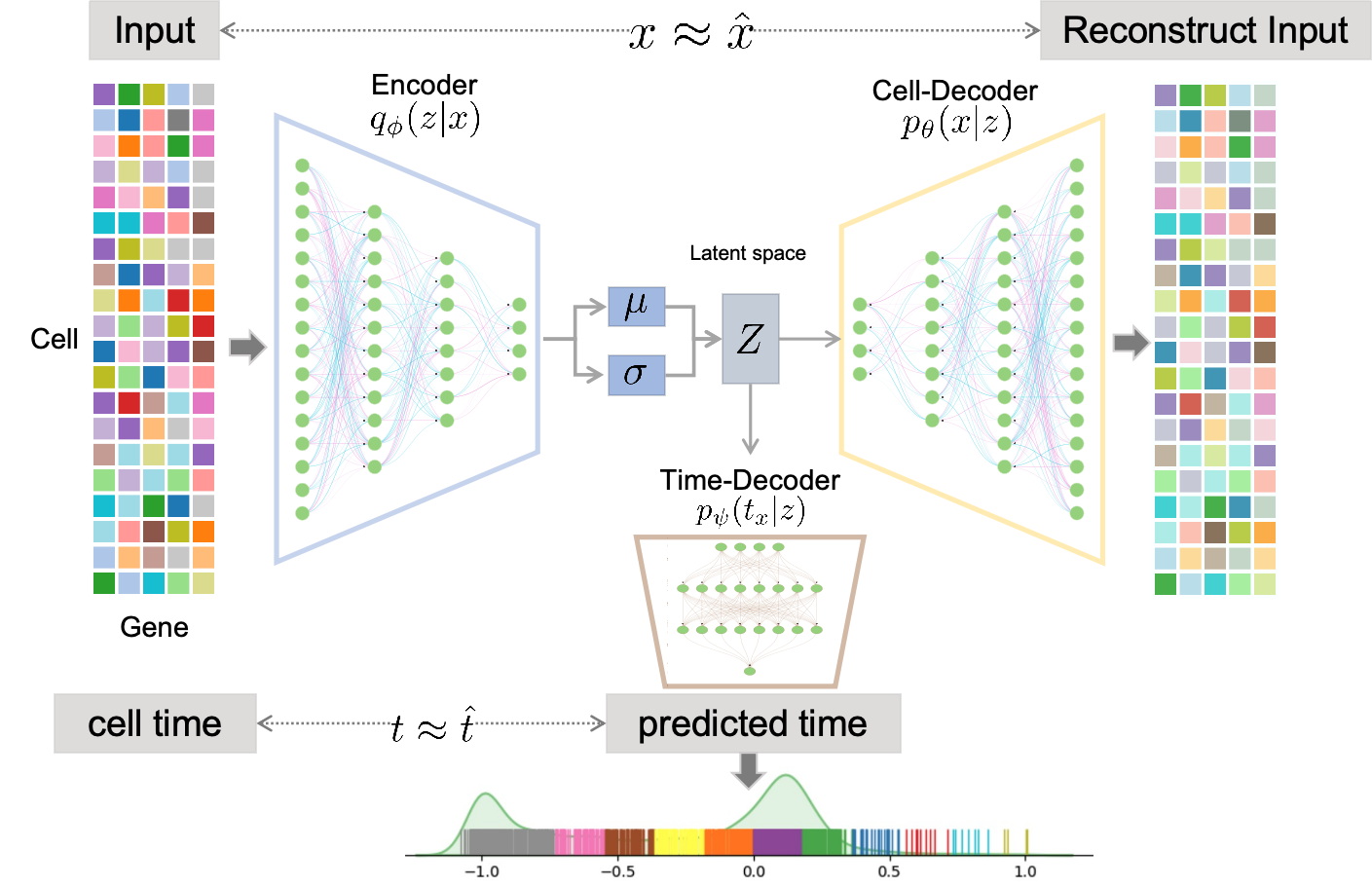
Contact: Yuanhua Huang, Dandan Cao, Yijun Liu
Email: yuanhua@hku.hk.
StemVAE use the probabilistic latent space model to infer the pseudo-time of cells. StemVAE input consists of an mRNA expression matrix and real-time labels of cells, and output is the reconstruction of the expression matrix and predicted time. StemVAE, based on canonical variation atuo-encoder (VAE), includes an encoder, a cell-decoder, and a time-decoder.
- v0.1 (Sep, 2023): Initial release.
To install stemVAE, python 3.9 is required and follow the instruction
- Install Miniconda3 if not already available.
- Clone this repository:
git clone https://github.com/awa121/stemVAE_endometrium- Navigate to
stemVAE_endometriumdirectory:
cd stemVAE_endometrium- (5-10 minutes) Create a conda environment with the required dependencies:
conda env create -f environment.yml- Activate the
stemVAEenvironment you just created:
conda activate stemVAE- Install pytorch: You may refer to pytorch installtion as needed. For example, the command of installing a cpu-only pytorch is:
conda install pytorch torchvision torchaudio cpuonly -c pytorchStemVAE contains 2 main function: k fold test on dataset; predict on a new donor. And we also provide code to reproduce the result in the paper.
To check available modules, run:
Todo list
The result will save to folder results, log file wile save to folder logs
python -u VAE_fromDandan_testOnOneDonor.py
--vae_param_file=supervise_vae_regressionclfdecoder
--file_path=preprocess_02_major_Anno0717_Gene0720 --time_standard_type=neg1to1
--train_epoch_num=100
--result_save_path=230728_newAnno0717_Gene0720_18donor_2type_plot
> logs/log.log
